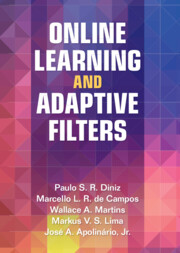277 results
Characteristics of healthcare personnel with SARS-CoV-2 infection: 10 emerging infections program sites in the United States, April 2020–December 2021
-
- Journal:
- Infection Control & Hospital Epidemiology , First View
- Published online by Cambridge University Press:
- 21 May 2024, pp. 1-9
-
- Article
-
- You have access
- Open access
- HTML
- Export citation
Entrainment, detrainment and enstrophy transport by small-scale vortex structures
-
- Journal:
- Journal of Fluid Mechanics / Volume 973 / 25 October 2023
- Published online by Cambridge University Press:
- 10 October 2023, A5
-
- Article
-
- You have access
- Open access
- HTML
- Export citation
Traditional definition of healthcare-associated influenza underestimates cases associated with other healthcare exposures in a population-based surveillance system
-
- Journal:
- Infection Control & Hospital Epidemiology / Volume 44 / Issue 11 / November 2023
- Published online by Cambridge University Press:
- 19 April 2023, pp. 1816-1822
- Print publication:
- November 2023
-
- Article
-
- You have access
- Open access
- HTML
- Export citation
6 - Adaptive Filtering on Graphs
-
- Book:
- Online Learning and Adaptive Filters
- Published online:
- 24 November 2022
- Print publication:
- 08 December 2022, pp 198-249
-
- Chapter
- Export citation
Contents
-
- Book:
- Online Learning and Adaptive Filters
- Published online:
- 24 November 2022
- Print publication:
- 08 December 2022, pp v-viii
-
- Chapter
- Export citation
Preface
-
- Book:
- Online Learning and Adaptive Filters
- Published online:
- 24 November 2022
- Print publication:
- 08 December 2022, pp ix-xii
-
- Chapter
- Export citation
5 - Adaptive Beamforming
-
- Book:
- Online Learning and Adaptive Filters
- Published online:
- 24 November 2022
- Print publication:
- 08 December 2022, pp 152-197
-
- Chapter
- Export citation
Frontmatter
-
- Book:
- Online Learning and Adaptive Filters
- Published online:
- 24 November 2022
- Print publication:
- 08 December 2022, pp i-iv
-
- Chapter
- Export citation
Index
-
- Book:
- Online Learning and Adaptive Filters
- Published online:
- 24 November 2022
- Print publication:
- 08 December 2022, pp 250-253
-
- Chapter
- Export citation
Acknowledgements
-
- Book:
- Online Learning and Adaptive Filters
- Published online:
- 24 November 2022
- Print publication:
- 08 December 2022, pp xiii-xiv
-
- Chapter
- Export citation
3 - Kernel-Based Adaptive Filtering
-
- Book:
- Online Learning and Adaptive Filters
- Published online:
- 24 November 2022
- Print publication:
- 08 December 2022, pp 60-108
-
- Chapter
- Export citation
Introduction
-
- Book:
- Online Learning and Adaptive Filters
- Published online:
- 24 November 2022
- Print publication:
- 08 December 2022, pp 1-15
-
- Chapter
- Export citation
4 - Distributed Adaptive Filters
-
- Book:
- Online Learning and Adaptive Filters
- Published online:
- 24 November 2022
- Print publication:
- 08 December 2022, pp 109-151
-
- Chapter
- Export citation
2 - Adaptive Filtering for Sparse Models
-
- Book:
- Online Learning and Adaptive Filters
- Published online:
- 24 November 2022
- Print publication:
- 08 December 2022, pp 16-59
-
- Chapter
- Export citation

Online Learning and Adaptive Filters
-
- Published online:
- 24 November 2022
- Print publication:
- 08 December 2022
Paediatrician’s guide to post-operative care for biventricular CHD: a review
-
- Journal:
- Cardiology in the Young / Volume 32 / Issue 11 / November 2022
- Published online by Cambridge University Press:
- 27 September 2022, pp. 1721-1727
-
- Article
-
- You have access
- Open access
- HTML
- Export citation
Paediatrician’s guide to post-operative care for functionally univentricular CHD: a review
-
- Journal:
- Cardiology in the Young / Volume 32 / Issue 10 / October 2022
- Published online by Cambridge University Press:
- 23 September 2022, pp. 1547-1553
-
- Article
-
- You have access
- Open access
- HTML
- Export citation
Using polygenic scores and clinical data for bipolar disorder patient stratification and lithium response prediction: machine learning approach – CORRIGENDUM
-
- Journal:
- The British Journal of Psychiatry / Volume 221 / Issue 2 / August 2022
- Published online by Cambridge University Press:
- 04 May 2022, p. 494
- Print publication:
- August 2022
-
- Article
-
- You have access
- Open access
- HTML
- Export citation
Using polygenic scores and clinical data for bipolar disorder patient stratification and lithium response prediction: machine learning approach
-
- Journal:
- The British Journal of Psychiatry / Volume 220 / Issue 4 / April 2022
- Published online by Cambridge University Press:
- 28 February 2022, pp. 219-228
- Print publication:
- April 2022
-
- Article
-
- You have access
- Open access
- HTML
- Export citation
Rapid necrosis II: physiological and molecular analysis of 2,4-D resistance in Sumatran fleabane (Conyza sumatrensis)
-
- Journal:
- Weed Science / Volume 70 / Issue 1 / January 2022
- Published online by Cambridge University Press:
- 28 October 2021, pp. 36-45
-
- Article
- Export citation



